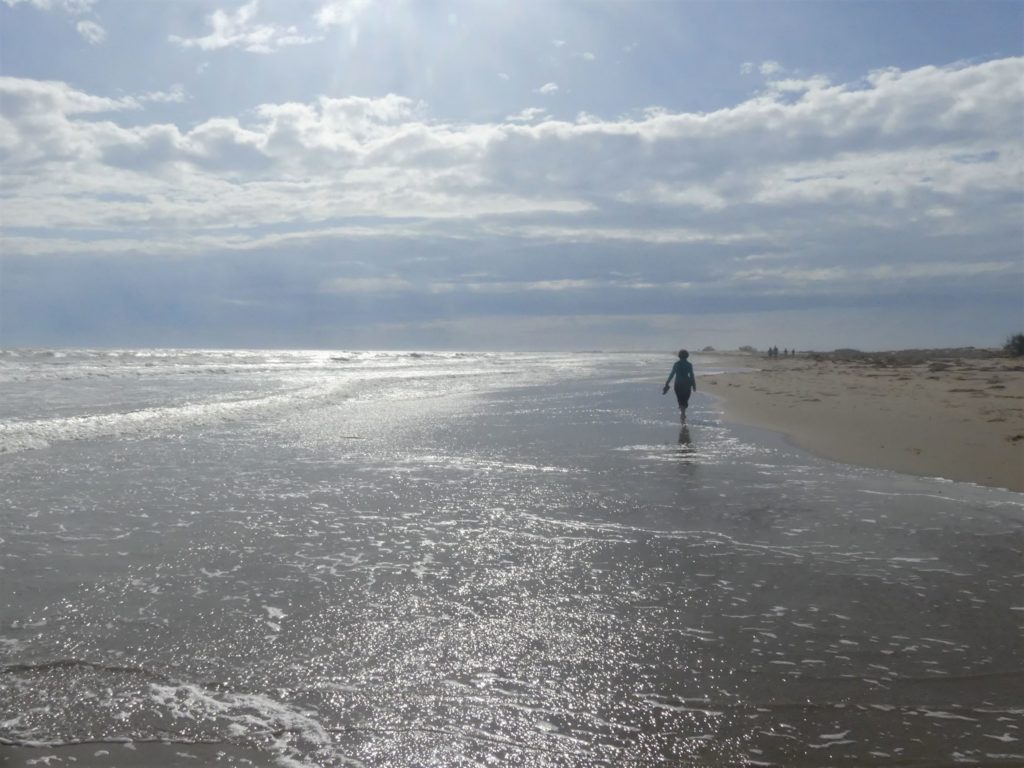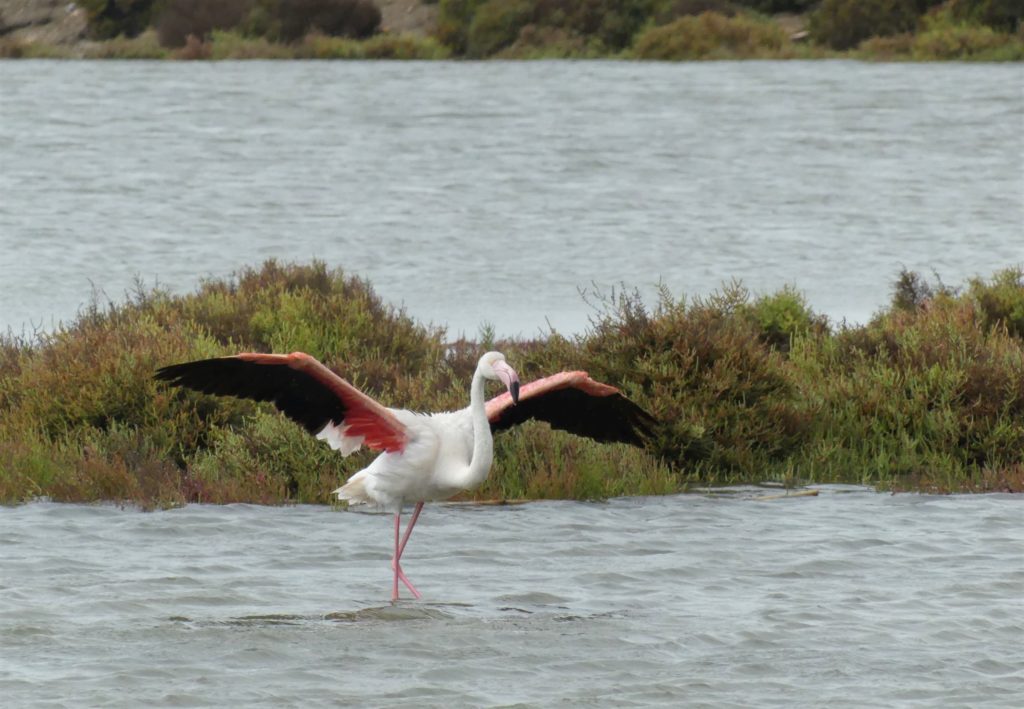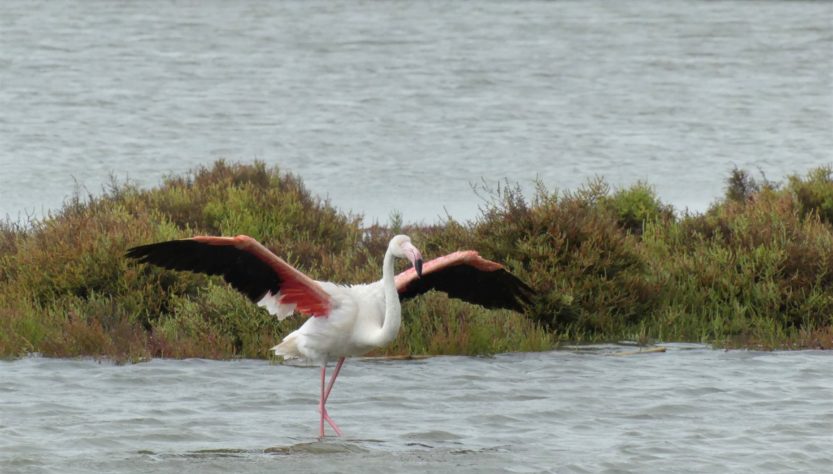
We drove south from Lleida, away from the spectacular heights of the Pyrenees, once again traversing the largely feature free Spanish plain, but before long things began to get more interesting as we entered the valley of one of Spain’s greatest rivers, the Ebro. We followed the river towards its meeting with the Mediterranean Sea, once again surrounded by green fields and forests, and occasional fleeting glimpses of the great waterway, twisting and turning but always pushing Eastwards.


Approaching the coast, the landscape around became quite mountainous again, quite rugged, before finally slipping free of the mountains and entering the expansive flat plain of the Ebro Delta. Bright, streaming sunlight competed with the dark clouds of what in the following days would become a storm of quite epic proportions. We were planning to camp, to stay at a site called Camping Eucalyptus, on the Delta’s South Eastern edge. I didn’t really know what to expect of the Delta, but as we began to drive along small roads, bounded on either side by lush rice ‘paddies’, I was instantly struck by the richness of this environment. The amount of birdlife instantly multiplied on an quantum scale. Cattle and little egrets were everywhere, along with the frozen statuesque forms of Grey Herons and Great Egrets. There were fleeting glimpses of Raptors, ridding the rough thermals above. Birds I would later learn were Marsh Harriers, ever watchful for the prospect of a quick meal.

As we reached the small ‘urbanisation’ around Eucalyptus, we no longer outrun the storm. Lightning flashed across the sky and heavens opened, an intense downpour followed by magnificent rainbows arcing across the heavens. The campsite looked good with excellent facilities and right on the beach front- a beach that stretches pretty much unbroken around the peninsula. However, given the unstable nature of the weather and the furious nature of the downpours, Gabi put forward the idea that it might be better to find a room. A bit of hard core internet searching found us something in our budget- the super cheap (30 Euro Per Night for a double) Hotel Rocamar, in the small port of Sant Carles de la Rapita. The place would win no prizes for aesthetics, but the beds were comfortable, the showers were hot and we didn’t make our way across the country just to hang out in a hotel anyway! This was perfectly good sleeping option.
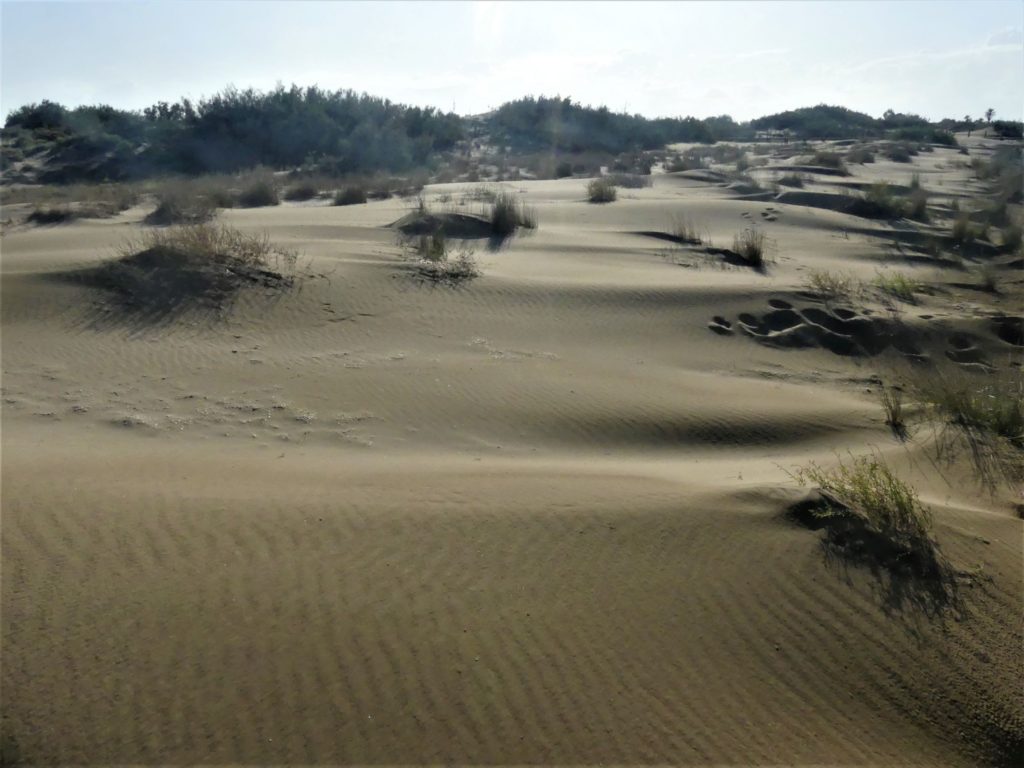
With a bit of local advice, the next day we headed out along the southern edge of the Delta, through a network of protected areas and saline lakes. A few times we just had to pull over on the edges of road to watch huge flocks of birds feeding in a fields: gulls, egrets, ducks, avocets, herons and large groups of startling glossy ibis. It was a wild and windy day again, and the Ibises looked totally black as they hunkered down against the rain. Many of the birds were having flying problems as the gusts hurled them around the air. Between the lakes L’Encanyissada and La Tancada there are also quite a few wildlife watching hides, great for eco-tourism enthusiasts. Our plan had been to drive down a long 7km causeway pultruding South from the Delta, to the isolated Punta de la Banya, a protected area and Sea Salt production zone. Nature had other plans. The sea had been whipped in a such a furry that the sandy causeway had been all but submerged by giant roaring waves that were driving the sea far inland, into the dunes and wetlands along the coast. It was an impressive, awesome sight, but also a reminder of area’s vulnerability to climate change. After a long phase of expansion, the Delta is now being steadily eroded and reclaimed by sea level rise. Dams, upstream on the Ebro River have also reduced the flow of rich silt from the interior that sustained and built this rich eco-system in the first place.
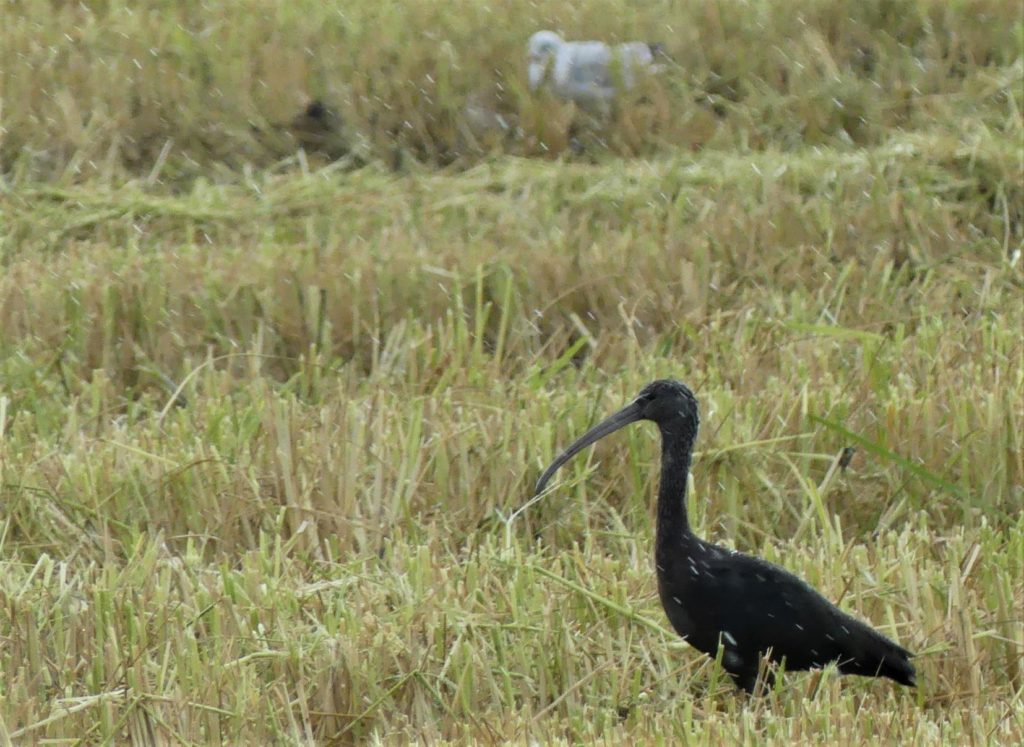
Unable to reach La Banya, we nevertheless got a magnificent up close view of Ebro Delta’s Flamingo population as they fed in the pools around us. They are such wonderful, strange creatures! In flight especially they look like pieces of overly stretched pink rubber. Incredible! Depending on the season, the Ebro Delta is home to between 3 to 10 thousand of these remarkable birds. At la Tancada there is an excellent conservation centre run by the Mon Natura Foundation with some interesting, well presented exhibits, detailing the nature and evolution of the Delta, its human history and also conservation actions being taken to protect and restore the Delta’s natural heritage. Well worth a visit and very child friendly!
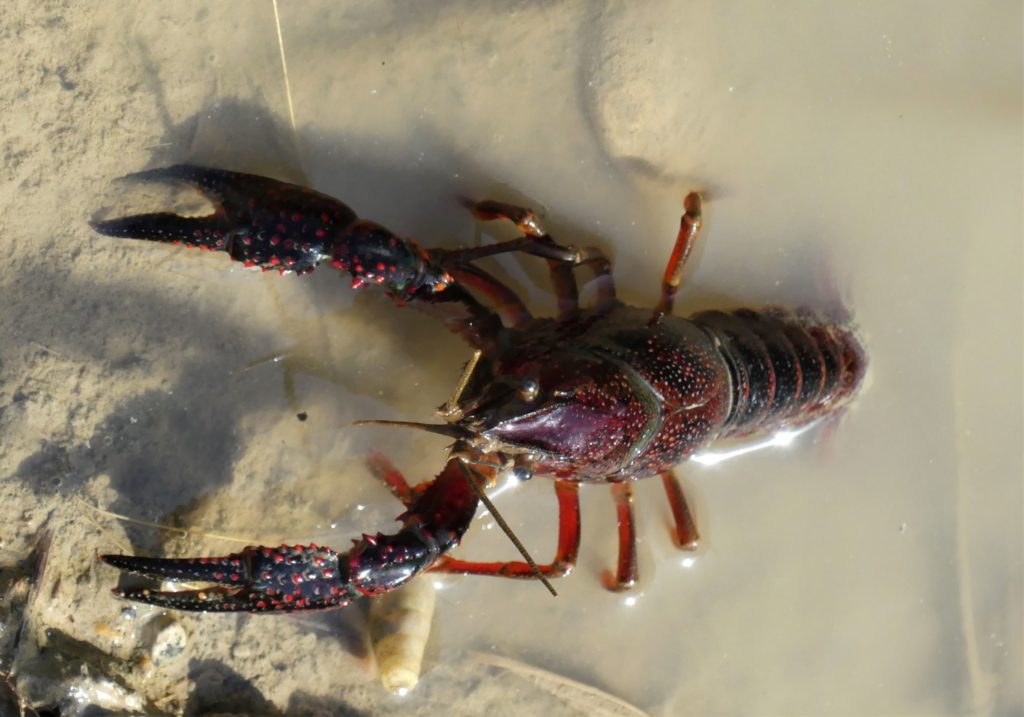
It was time to take a break and get some sustenance, so we headed to Ebro Delta’s main town Sant Jaume d’Enveja, inland, on the South Bank of the Ebro River. On the North Bank the town is called Deltebre, but for all intents and purposes this is just one town. This is the starting point for boat trips down the river to its meeting point with the sea at the strangely named Ills de Buda, another protected area, and one that, despite the name, isn’t really an island! We stopped at a fantastic, friendly little bar/restaurant called ‘Un Mos’, that served fantastic tasty food in portions that could satisfy a half-starved T-Rex, and all around 5 Euros a plate!
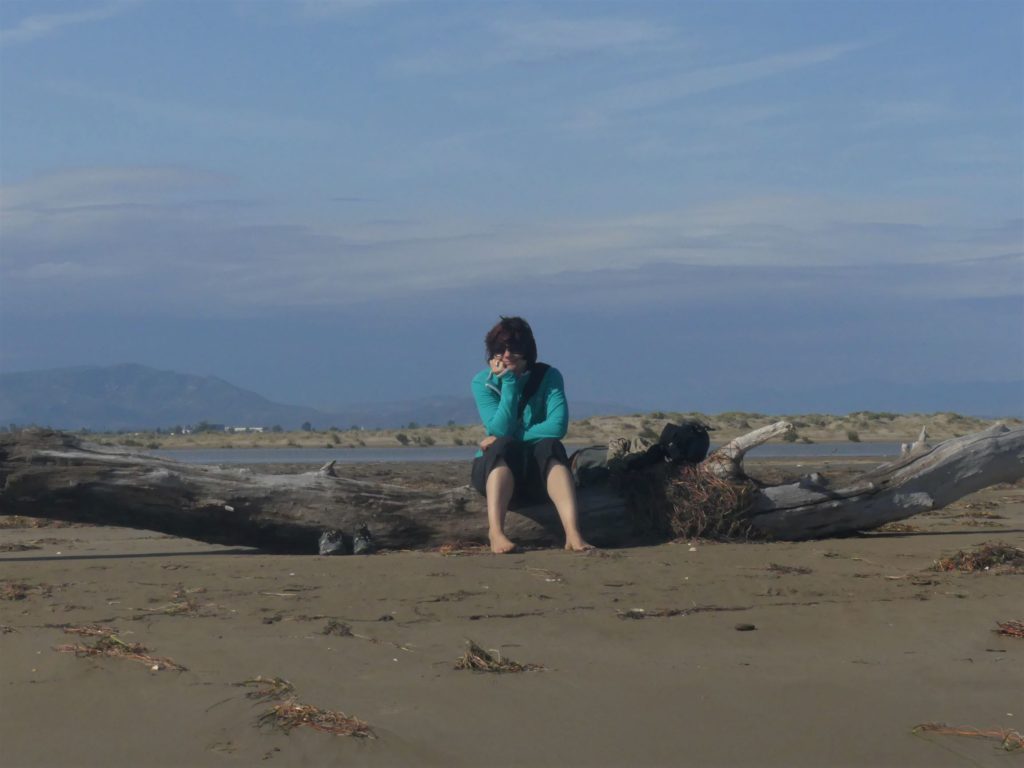
Fully re-fuelled we decided to check out one more corner of the Peninsula that day. We headed down to the small town on Riumar, on the coast, near the point where the Ebro meets the sea. Ruimar is a cute, low rise kind of place, fronted by a system of eco-logically fragile dunes that conceal a beautiful wild stretch of beach. The seafront is accessed by an elevated walkway to avoid and damage the dunes and fragile plants and herbs that grow in this eco-system. The beach itself is truly lovely, and though the sea was too wild for a swim, we couldn’t resist taking our shoes off and splashing our way along the sea-shore. A kite boarder was also having his 3-D ride of the year out on the waves, along with being slammed a few times by their power. A lovely end to the day.

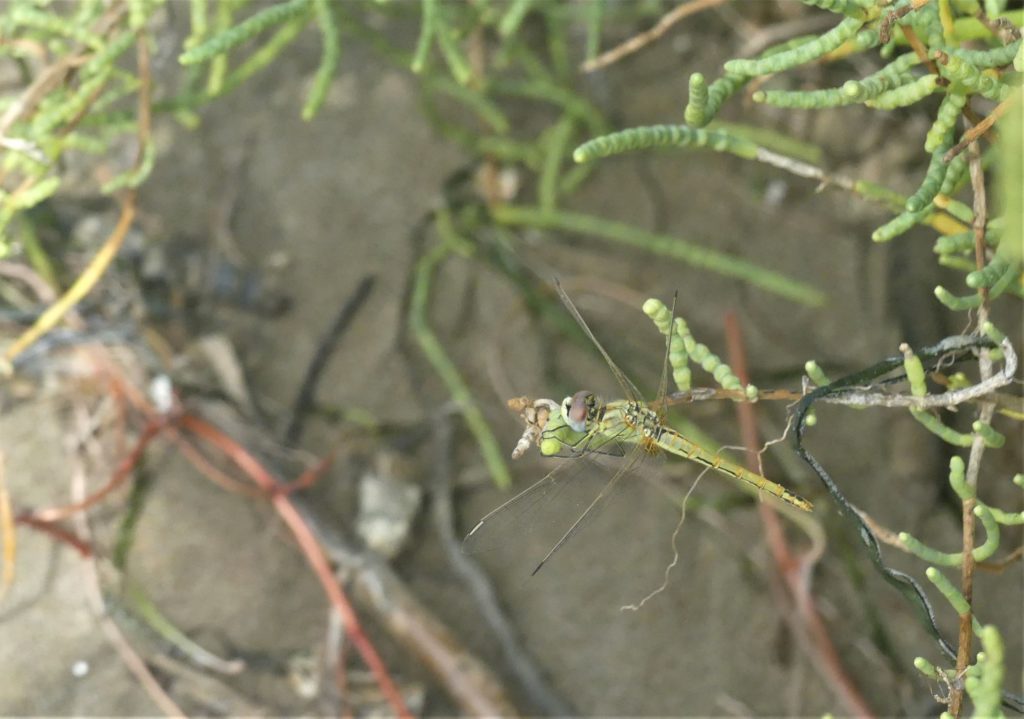
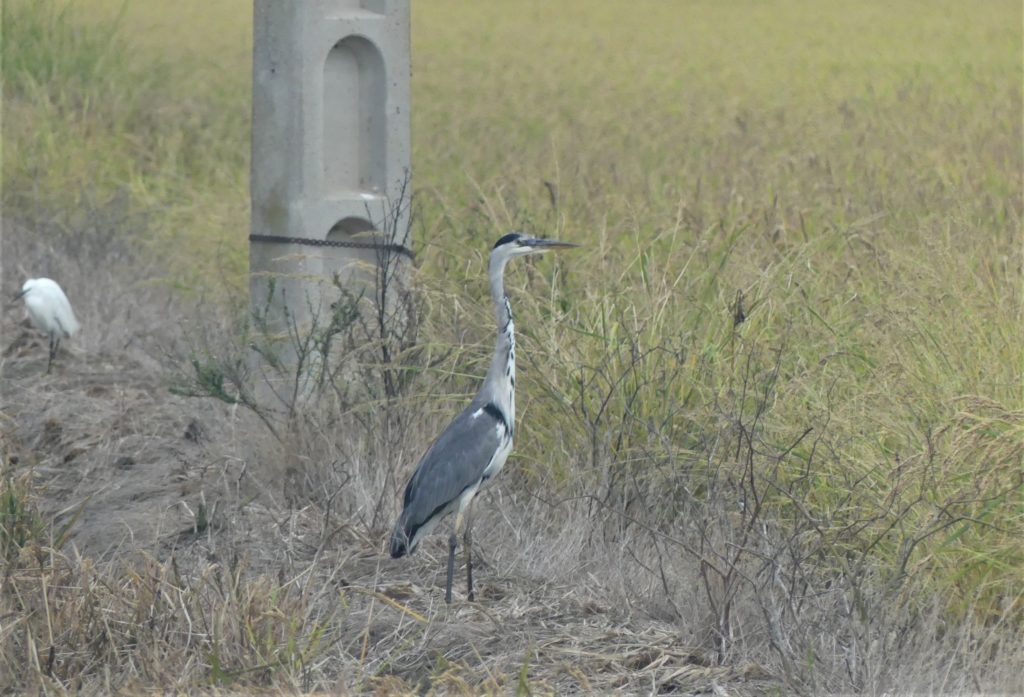
The next day we were heading back home, back to Granada, leaving Catalunya behind after a fabulous weak exploring its wild mountains and coastline, but before heading home we decided to explore the seemingly endless expanse of the Delta’s Playa de La Marquesa. The beach, backed again by impressive dunes, stretches for kilometres towards the Delta’s Northern most point, the lighthouse at Punta del Fangar. In the early morning, the light played beautifully on the water with the waves still whipped up by the wind, but a little diminished from ferocious state of the previous day. On the way up the beach we only passed a couple of souls in nearly an hour. I couldn’t resist the warm water and a chance of play and dive in amongst the waves. It was just bliss, riding with power of waves and the currents, but finally I had to leave the sea, and as we walked back down the beach we took in the wild and seemingly underappreciated section of the Mediterranean. We drove home and that day the heavens opened on the regions of Valencia and Murcia in one of the most extreme storms in recent Spanish memory. Record breaking amounts of rain turned dry riverbeds into 9-meter-deep rivers and fields became lakes. Sometimes it was difficult to drive due to the power of the rain, and 6 people died in the flooding that followed. Another reminder, if any was required, of how we changing our climate and making weather more extreme.
